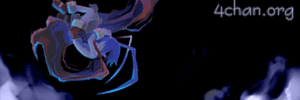| >> |
12/22/11(Thu)16:34 No.17302954>>17302942
Undead infantry would remain useful for quite some time, as even the churches of life and sun and fertility were not immune to seemingly-endless waves of cheaply-produced corpse-soldiers. But to augment them, new kinds of life were engineered. Taking lessons from both the main processing beast and the fungal systems, these new creatures were durable, but moreover capable of astounding recovery. Some reports from the front would even claim that not only would these creatures regrow severed limbs, but also that sometimes a severed limb would itself grow into duplicate of the creature--well larger than a human being--from which it was cleaved. While not as nearly-invulnerable as the central processor-creature, these front-line organisms were terrors to those who faced them.
Moreover, as yet another hedge against the destruction of the primary organism, these creatures were given an emergency function. Each of them was tied, of course, into the pain-network, exchanging information with the primary processing beast. The main organism was, even when regenerating from apparent death, able to communicate through the network. If the main processor was ever so thoroughly destroyed that these hulking frontliners lost contact with it, they possessed the ability to gather into clusters, which would then bond such that each cluster was a single, incorporated organism. These cluster-organisms would slowly grow, converting eventually into a new iteration of the original main processor creature. When a new main processor was finally established, the partially-completed clusters would either break back into individual creatures, or exist as some strange, unique mid-form. |

